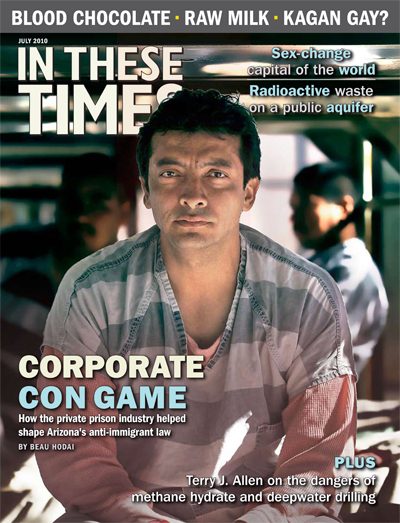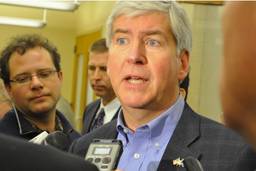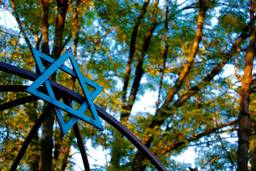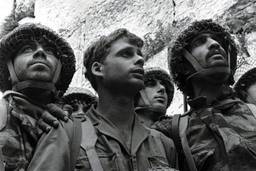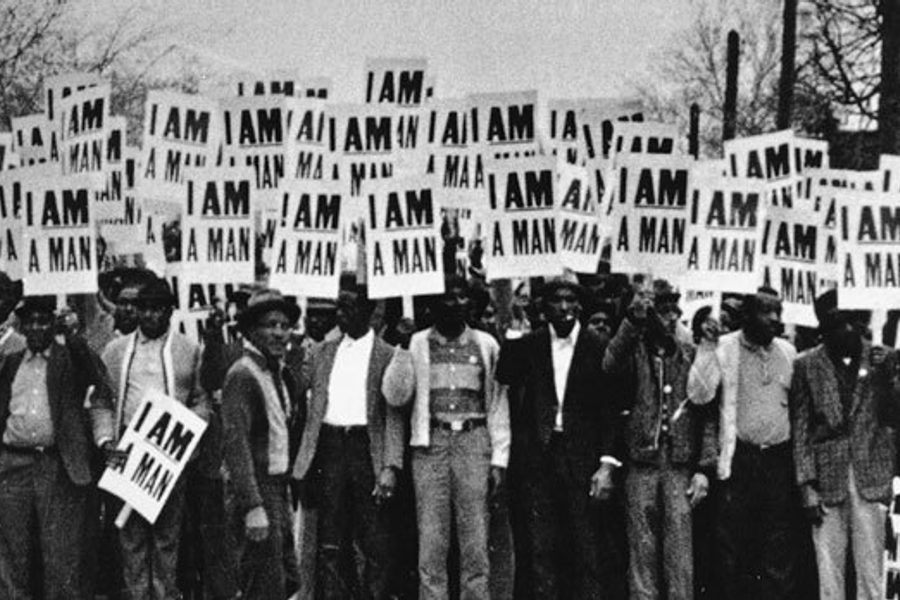
Naftali finds me in the lobby bar of the Jerusalem Grand Court, a utilitarian tourist hotel on formerly Arab-controlled land just east of Bar-Lev Avenue, which until June, 1967, marked the green line separating Israel and Jordan.
He’s in his mid-fifties, with a medium-pale complexion, hazel eyes, thinning brown hair and a scraggly grey beard that is nearly down to his chest.
Naftali’s grandfather and my grandmother were first cousins in Poland. After the Ghetto and Auschwitz, his parents found haven in Israel, mine in the United States. For 30 years Naftali’s familiy lived on a Gaza moshav that cultivated flowers, until 2005, when the government “evacuated” them to a new development within Israel proper in a land-for-peace swap. On the day they left, cooperative members destroyed the greenhouses and irrigation systems they had built and tended for more than a generation.
Twenty years ago, Naftali began volunteering with an organization whose yellow-vested members arrive in the immediate aftermath of terrorist explosions, accidents and natural disasters to help recover body parts so as to assure a proper Jewish burial for the victims. Now he’s the organization’s full time CEO.
There’s a montage on Naftali’s laptop depicting their activities – sifting through twisted metal and exploded concrete of a suicide murder, searching Port-au-Prince’s ruins with trained dogs, recovering remains in Mumbai, excavating a recently discovered World War II era mass grave of murdered Jews in the Ukraine, rescuing Torah scrolls from submerged New Orleans nursing homes and synagogues.
When the conversation turns to the purpose of my visit, I say I’m with a labor mission that will be spending four days in Bethlehem and Hebron conducting organizational development work with Palestinian trade unionists.
He is too reserved to ask if I’m crazy. We’re both grandparents and share the same history, heritage and blood. The skepticism I see in his eyes remains tempered but resolute.
“You should speak with Christians,” he says. “When they’re alone, they can tell you what’s really in their hearts. No matter what they say in public, Christians are more afraid of living in an Islamic Palestine than under us.”
Maryam, a Greek Orthodox Palestinian who is handling the arrangements and is our driver for the four-day meeting with the trade unionists, tells us we’ll be more comfortable staying in Christian Bethlehem, and commuting half an hour to our meetings in Hebron.
Maryam is 29 with shoulder-length black hair parted in the middle. The jeans and zippered hoodie she is wearing are pure Gap. Her full-time job is with an international development organization that provides services to Palestinian children. It pays $18,000 a year – two to three times a teacher’s salary. She drives a six-year old Fiat but she has a new Honda on order.
As Maryam drives us through the West Bank, we enter a classification patchwork that sets my head spinning. The inelegant bureaucracy of occupation assigns lettered designations to every parcel of land according to who is entitled to live there.
Area “A” territory is under the administration of the Palestinian Authority where only Palestinians are allowed to live but Israelis can visit freely.
Area “B” land falls under the jurisdiction and administration of the Israelis, but can be inhabited by Israeli and Palestinian citizens alike.
Area “C” land is under the complete control of Israel. Palestinians are not allowed to reside here.
Anticipating the objection that you can’t have a non-contiguous yet viable Palestine, Israel has begun constructing a system of special highways – Palestine-only thoroughfares, fenced and walled at the shoulders. The labyrinthine detail involved in devising this arrangement and attendant nomenclature is nothing short of Teutonic in its dull precision.
From the car, Maryam points to the tile-roofed terraced apartment buildings and single-family houses of the Israeli settlement of Efrata, population 9,000. The construction expands inexorably along a steep ridge running nearly the entire 10-mile length of the Bethlehem-Hebron corridor.
“This is land the Israelis stole,” she says. “Whatever they want, they take.”
The solution, I expect her to say, is Palestinian sovereignty. But that’s not what she has in mind. She insists the only practical alternative is the creation of a single undivided nation subsuming the West Bank, Gaza, and Israel, where everyone’s voice counts equally and no single group enjoys special rights above any of the rest.
“A Palestinian state alongside Israel solves nothing,” she says. “The Israelis will never give up the advantages they’ve seized.”
The trade unionists we meet in Hebron are a mixed group of worksite leaders from the immediate area. I had been led to expect they would filibuster us with grievances against Israel, the occupation and American foreign policy, but this did not happen.
Instead, we talk about the challenges of organizing and representing workers when there’s no legal framework allowing it and no money to bargain over. They recount the strikes they’ve run with a more than 87 percent participation rate, even though membership hovers at less than 20 percent. We explore the value of transparency and democratic practices, and the power of listening over exhortation.
The closest I come to a discussion of the occupation occurs during a prayer break on our last day in Hebron, when a petite woman wearing a paisley headscarf, floor-length fitted double-breasted brown wool coat and lipstick, invites us to view several paintings she’s made.
The most striking is a four-foot high fiberboard and collage depicting a twilight skyscape, “Divided Jersusalem.”
There’s undeniable passion in the work, but also power in what’s missing. You see the Dome of the Rock, the Church of the Holy Sepulcher, various lesser minarets, steeples and mosques shaping the golden sky. You also notice that nowhere in this rendering of the City of David is there a single depiction of a Jewish Star.
Back in Tel Aviv, I meet my cousin Nourit and her husband, Amos, who I haven’t seen in 10 years. Nourit teaches deaf kids and Amos is an electrical engineer retired from Israel’s defense industry.
I tell them what I’ve been doing over the past several days in Jerusalem, then Bethlehem and Hebron, and now I’m happy to be back in Israel.
“What do you mean back?” says Nourit. “You never left!”
She asks, “Did they know you are Jewish?”
“It never came up,” I say.
“What’s your impression of the Arabs?” She is testing my naivete.
My greatest surprise, I say, was finding the exact opposite of what her brother, Naftali, had predicted. I tell them about Maryam and her litany of complaints about life under occupation, the twenty-foot-high concrete barrier walling off Bethlehem and the West Bank, the restrictions on travel, the nonsensical bureaucratic edicts on consumer products, the humiliating documents checks and long waits at the borders to visit land she claims as a birthright.
Before I can finish Nourit interrupts to explain – the way she might to a dimwitted student – that you don’t understand the way it is, that the Arabs bring this on themselves, that whatever measures Israel is forced to take is in self-defense, that our history shows “these people want only to murder Jews!”
I concede that the wall was erected for a reason and agree that it works. It’s important for them to hear me say this.
That permits them to hear me out when I tell them about the message I saw spray-painted in green across a guard tower at the wall in Bethlehem: “Israel, Is this what you want to be remembered by?”
Amos allows that the occupation dehumanizes not only those who live under it, but those who must enforce it as well.
“It’s a terrible thing,” says Amos, referring to the occupation and the wall surrounding Palestine, “but not as terrible as having to send Naftali’s volunteers out on even one more mission scouring blood from a Tel Aviv bus stop or picking through the smoking rubble of a Jerusalem market recovering remnants of burnt Jewish flesh.”
If things are to change, Palestinians are going to have to be able to see the world through Jewish eyes, and Israelis will need to do the same with regard to their Arab cousins. That means leaders – in the universities, the arts and letters, politics and faith – on both sides saying things their people haven’t heard before, and foregoing the easy leverage of bigotry. Palestinians, for example, are going to have to recognize that Jewish belief in God’s promise to Abraham – and not the Shoah or European colonialism – establishes the claim of a Jewish homeland in Israel. Similarly, Israelis are going to have to acknowledge a collective responsibility for Palestinian displacement as a result of the 1948 war as well as the obligation to provide redress. Otherwise grievance and victimhood will continue to trump empathy, appeals to history and justice will count for less and less, and force of arms and terror will be the only legitimacy that matters.
